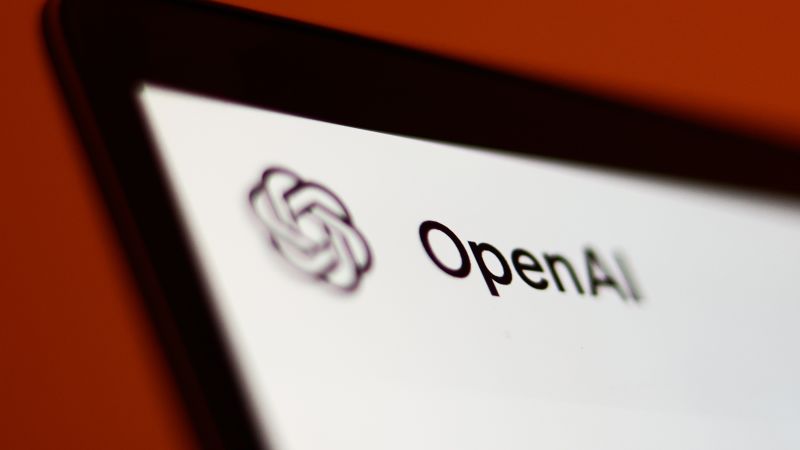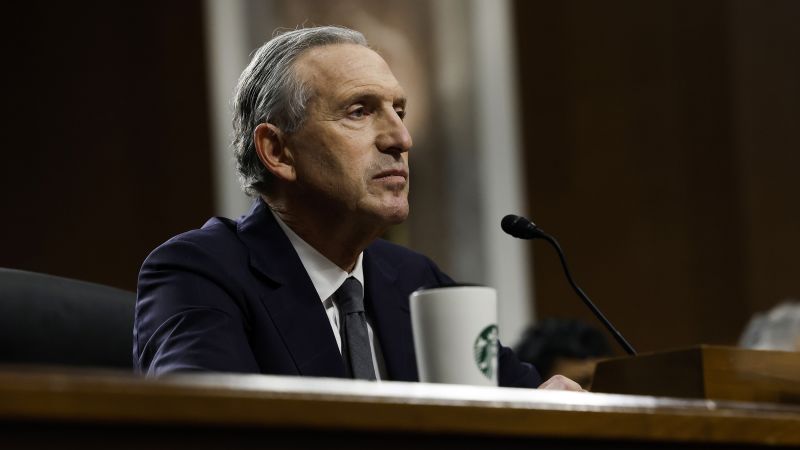A version of this story appeared in CNN Business’ Nightcap newsletter. To get it in your inbox, sign up for free, here.
OpenAI may very well be the future of Silicon Valley, the next Google, the Great Disruptor, the Slayer of Late Capitalist Workplace Tedium, etc, etc.
But right now, as the startup morphs from a nonprofit-led research lab into a for-profit AI superstar, is a good time to put OpenAI and its brainy (often chaotic) leadership team under the microscope. Because if we accept OpenAI’s basic premise that better-than-human artificial intelligence is inevitable, and that it’s the best brand to harness that power, then it’s worth taking a moment to ask that age-old question in business: Really?!
Here’s the deal: OpenAI, the company behind ChatGPT, just announced a $6.6 billion private funding round — the biggest in Silicon Valley history — that gives the young company a valuation of $157 billion, despite a decidedly unclear path to profitability.
(For context, public companies with similar valuations include Goldman Sachs and Pfizer.)
The list of OpenAI’s latest investors reportedly includes huge names in tech, including Microsoft (which has already plowed more than $13 billion in since 2019), Thrive Capital, Nvidia, Cathie Wood’s Ark Investment Management and Japanese conglomerate SoftBank.
But it’s worth noting that Apple had been in talks to join that scrum, and it pulled out at the 11th hour, according to The Wall Street Journal.
It wasn’t clear why Apple, which didn’t respond to CNN’s request for comment, apparently backed out.
The iPhone maker doesn’t do a lot of strategic partnerships, so there’s that.
But you don’t need an MBA to see some red flags popping up with both OpenAI’s operations and the actual value of its technology.
One thing seems clear: The company is burning through far more cash than it’s bringing in, according to reporting from the New York Times.
Let’s do some numbers:
- OpenAI expects to do about $3.7 billion in sales this year. (That’s revenue largely from subscriptions to premium versions of ChatGPT and licensing its tech to third-party developers.)
- But it can expect, conservatively, to burn through $5 billion in costs, according to the Times.
- (OK, so that’s not great but maybe not a dealbreaker for a young, buzzy startup with ambitions as lofty as OpenAI’s.)
Here’s where things get a little wild:
- Next year, OpenAI estimates that its revenue will more than triple to $11.6 billion. (To which I say, with all due respect: Really?)
- And by 2029, it’s projecting $100 billion in sales. That’s a more than 2,600% increase over the next five years. (Again: Really?!)
- It’s not clear how, or whether, OpenAI is working on reducing its significant cash burn. (The company declined to comment to the Times and to CNN.)
When I asked Gil Luria, a managing director at investment group D.A. Davidson, whether my OpenAI skepticism was well founded, he offered some polite pushback.
“The path from $0 in revenue to nearly $4 billion was clearly the fastest in history,” Luria said. “Nobody’s ever grown this fast at this scale, and they’re doing it again straight out of the gate with only the first few evolutions of their product set.”
Fair!
Though, having said that, Luria noted that getting to $11 billion in revenue, “a lot of things have to go right, and very little can go wrong.”
As for that $100 billion projection for 2029? “Entirely pie in the sky,” he says. “It has nothing to do with reality.”
One way OpenAI could improve its margins would be to cut costs. But even if it became extremely fastidious, there’s an economic conundrum at the heart of the generative AI industry: It costs a ton to train and operate large language models, and that’s a structural cost that differs from previous tech booms, as CNBC wrote last year.
In other words, the more people use ChatGPT, the more it costs in “compute,” as the industry calls it. Running these giant language models requires lots of advanced semiconductors inside giant, electricity-devouring data centers. It’s no wonder, then, that almost every major AI player is eager to get its paws on good old fashioned nuclear energy (as I wrote about here earlier this week).
The economics of AI are just one part of OpenAI’s challenges.
There’s also the Bravo-series-worthy soap opera playing out with its founders, almost all of whom have left, and board of directors.
OpenAI was founded in 2015 by CEO Sam Altman and 10 others as a nonprofit with a mission of “building safe and beneficial artificial general intelligence for the benefit of humanity.”
Then it morphed into a hybrid of sorts, a for-profit company helmed by a nonprofit board.
Now, with 1,700 employees, it’s preparing to largely dispense with the nonprofit angle and transition to a “public benefit corporation” — essentially a for-profit business with do-gooder energy.
Amid that shift, several executives have left in an exodus that’s raised questions about Altman’s commitment to the firm’s original mission in the face of, like, boatloads of cash.
What now? Flush with new capital, OpenAI can focus on the next iteration of ChatGPT, which, according Luria, is one of the Big Things that has to go right for the company. Whatever OpenAI’s next product looks like, it needs to knock our socks off.
“If GPT-5 is not an order of magnitude better than GPT-4, their runway gets considerably shorter,” he told me.
“If we’ve gone from a model that’s as smart as a high school student to GPT-4o being as smart as a PhD students, the next version has to be getting us closer to a model that’s smarter than any human … for this to be worth the investment.”
Read the full article here















